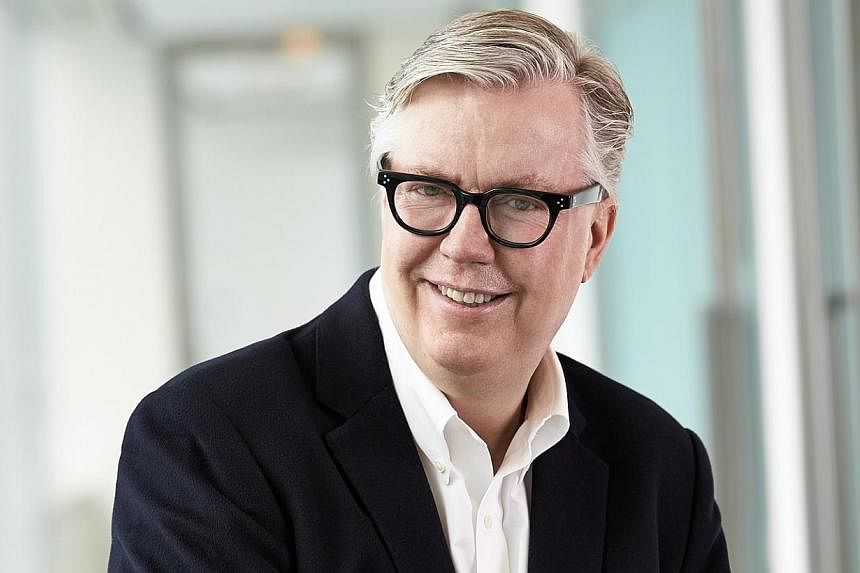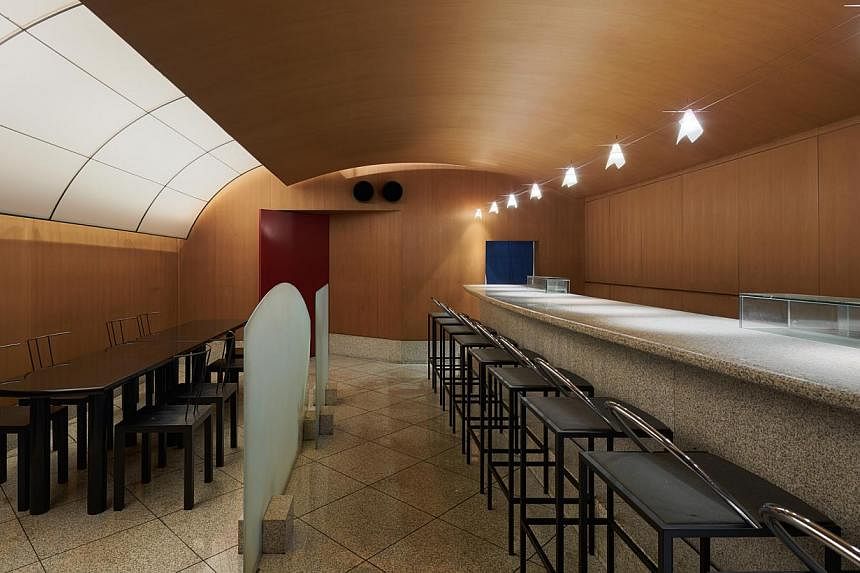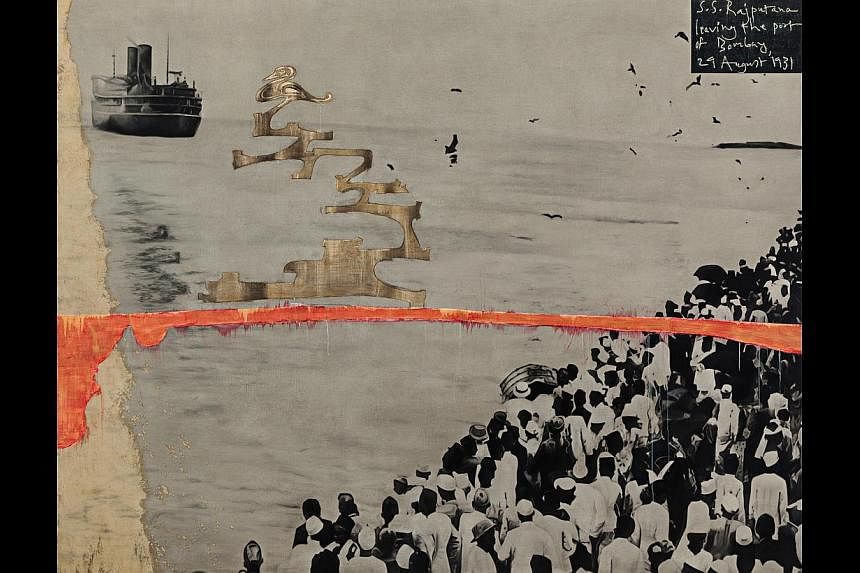He has overseen new museums such as the landmark Tate Modern in London, but Dr Lars Nittve, admits it is "rather unusual" to build up a museum collection from scratch.
In 2011, when he took charge of Hong Kong's M+ as its executive director, the mega-museum had nothing to its name. Not a single artwork had been acquired for its vast, then-unconstructed exhibition space. Projected at nearly 16,000 sq m, it is twice the size of the exhibition area of Tate Modern, of which Dr Nittve was founding director.
With some years to go till M+'s proposed opening in 2019, he says much progress has been made in building up a collection focusing on 20th- and 21st-century art, design, architecture and the moving image from greater China, Asia and beyond.
For a start, there are now more than 4,000 artworks in the museum's collection, the biggest addition to which came from a donation by former Swiss diplomat and key private collector of Chinese contemporary art, Mr Uli Sigg. Actively courted by Dr Nittve, Mr Sigg donated 1,463 works, reported to be worth HK$1.3 billion (S$229.5 million), to M+ in 2012.
Another major donation came from prominent Chinese collector Guan Yi in January last year. The 37 artworks he donated capture some of the key moments in the development of Chinese contemporary art from 1979 to 2005.
Making up a large part of the donation is Canton Express (2003), part of a seminal exhibition curated for the Venice Biennale in 2003. It was the first major international presentation of contemporary art from southern China's Pearl River Delta region, which experienced the earliest stirrings of industrialisation and urbanisation in the country.
Alongside the donations, the museum has been going about its own acquisitions. One advantage of starting with nothing is that the direction of the collection can be shaped from scratch, Dr Nittve tells Life!. Of the museum's focus, he says: "We are interested in art and artists whose work is an exploration of a home away from home. We are trying to be a global museum."
M+ is setting out to be the Asian answer to the Centre Pompidou in Paris or the Guggenheim Museum in Bilbao. Equally important, it aims to fill the vacuum in the present museum scene in Hong Kong. While the visual arts scene has been rapidly evolving - most apparent in the recent successful edition of the Art Basel Hong Kong fair and the booming auction market - museums still have some catching up to do.
That is where M+ fits in and the scale of the project has captured the world's attention. The museum is one of the centrepieces of the sprawling 40ha government-backed HK$24 billion West Kowloon Cultural District. The arts hub is being built on reclaimed land across from Hong Kong island.
M+ has received around HK$5 billion for construction and another HK$1.7 billion to build up a collection and cover costs such as storage.
Few art complexes in the world can rival M+'s 60,000 sq m building, which is designed by renowned Swiss architecture firm Herzog & de Meuron in partnership with Hong Kong-based TFP Farrells and Ove Arup & Partners. It includes exhibition spaces and a conservation and storage facility.
An Airport Express Rail Tunnel runs under the museum, connecting it to the Hong Kong International Airport and other subway stops. Directly above this tunnel is a cavernous exhibition space which can also be used for performances.
The museum will have three cinemas of different sizes. Crowning its facade is a public LED screen, which will transform the museum into a giant cinema screen overlooking Victoria Harbour.
Dr Nittve says: "Our collection will include movies - Hong Kong cinema is a classic - but also video games, graphic design or computer design."
A recent star acquisition is the Kiyotomo Sushi Bar in its entirety, designed by the late designer Shiro Kuramata (1934-1991). He was known as much for his interiors as for his furniture and created hundreds of interiors, but only a few remain intact.
Kiyotomo Sushi Bar is one of them, encompassing the designer's explorations of material, form and the conceptual understanding of objects and spaces. Kiyotomo was a fully functioning sushi restaurant in Tokyo's Shinbashi district until the outlet's closure in 2004.
The museum has also been adding iconic works such as architect Zaha Hadid's Peak Proposal, a set of 12 works including a painting and other printed and acrylic canvases done from 1982 to 1983; Hong Kong-born American artist and writer Paul Chan's two-channel digital projection installation titled My Birds...Trash...The Future... (2004); British sculptor Antony Gormley's Asian Field (2003); and Indian contemporary artist Atul Dodiya's S.S. Rajputana Leaving The Port Of Bombay - 29th August 1931 (2014).
When asked about the eclectic nature of the works, Dr Nittve emphasises the global vision of the museum and the kind of reflections the art pieces will evoke.
Gormley's work, for instance, consists of 210,000 clay figures which were fabricated in the village of Xiangshan in Guangdong province, China. Local clay was used, giving the figures their signature red colour. Dr Nittve calls it "one of the most important public artworks created in recent years in China".
Artist Dodiya's work was acquired only this month at the recently concluded Art Basel Hong Kong. The painting of passengers waiting to board S.S. Rajputana, a British passenger and cargo ocean liner that left the port of Bombay, references journeys and the connections between commerce and culture.
Dr Nittve wants the completed museum to be a conduit for dialogues through art. Though it is four years to the opening, M+'s 40-strong staff - 22 of whom are curators - have been working on numerous exhibitions and learning and outreach activities in Hong Kong and overseas to bolster the museum's standing locally and internationally.
Dr Nittve, an art historian by training, and his team of curators have spent time in Taiwan, South Korea and Japan studying the history of avant-garde art movements there.
As the museum's collection grows and the team's research deepens, research stints exploring artistic developments in South and South-east Asia are in the pipeline. These could lead to more works from these regions being acquired for the museum.
The idea, Dr Nittve says, is to continue the study of parallel art practices as well as to find breakthrough works from across Asia and beyond which will help tell the story of the beginnings as well as development of Asian-focused contemporary art.
He adds that the museum hopes to "embrace the fluidity between different visual culture genres and offer a different perspective on the last 70 years of visual creativity, this time from a Hong Kong, China and Asian perspective".
Museum nestled amid bustling arts cluster

An artist's impression shows the M+ museum, which will be part of the upcoming West Kowloon Cultural District. -- PHOTO: HERZOG & DE MEURON
The best way to get a view of Hong Kong's West Kowloon Cultural District, which the M+ museum is part of, is to head to the territory's bustling Convention and Exhibition Centre.
From the second and third floors of the centre, when you look across the bay, you will see multiple cranes in action. It is hard to tell that this construction site will be transformed completely by 2019.
The West Kowloon Cultural District, a cluster of visual and performing art spaces spread over the equivalent of 56 soccer fields, is expected to be a game changer for the visual and performing arts in the region when it opens.
Meeting selected members of the international media, the outgoing chief executive officer of the project, Mr Michael Lynch, is open to admitting that the massive project is "not without its problems".
Work on a new high-speed rail line to connect Hong Kong to China has seen tunnelling work below the West Kowloon Cultural District. It has, in turn, led to delays in the construction of the project, which was supposed to have been ready by 2017.
There have been other concerns too, most notably about the budget. On that, Mr Lynch says amiably: "I know the media likes to report how much 'over-budget' we are. We are in pretty good shape and have HK$24 billion." That works out to about S$4.2 billion.
Speaking about the space itself, he emphasised that the idea of the ambitious project is to "foster creativity" and the idea "that creativity should be spilling beyond the building and into outdoor spaces".
The entire district is being designed by several big names in the field, with the flagship art and cultural facility M+ being designed by renowned Swiss architecture firm Herzog & de Meuron in partnership with Hong Kong-based TFP Farrells and Ove Arup & Partners.
The first major venue to open will be the Xiqu Centre in 2017. The venue will be one of the largest of its kind worldwide and devoted to traditional Chinese opera. Mr Lynch calls this "the home for Cantonese opera".
The Xiqu Centre will also have a 200-seat Tea House Theatre, which will present small-scale productions and recitals in a Chinese teahouse setting.
The district will also include a park, which will provide a green open space in the heart of the city, and a waterfront promenade that offers spectacular views overlooking Victoria Harbour.
Nestled in the park are two theatre venues. One is an intimate black box theatre for standing as well as seated events including plays, music gigs and dance performances.
The other is an outdoor stage for a standing audience of more than 10,000, which will be ideal for more informal events such as large-scale outdoor performances and festivals, adds Mr Lynch.



